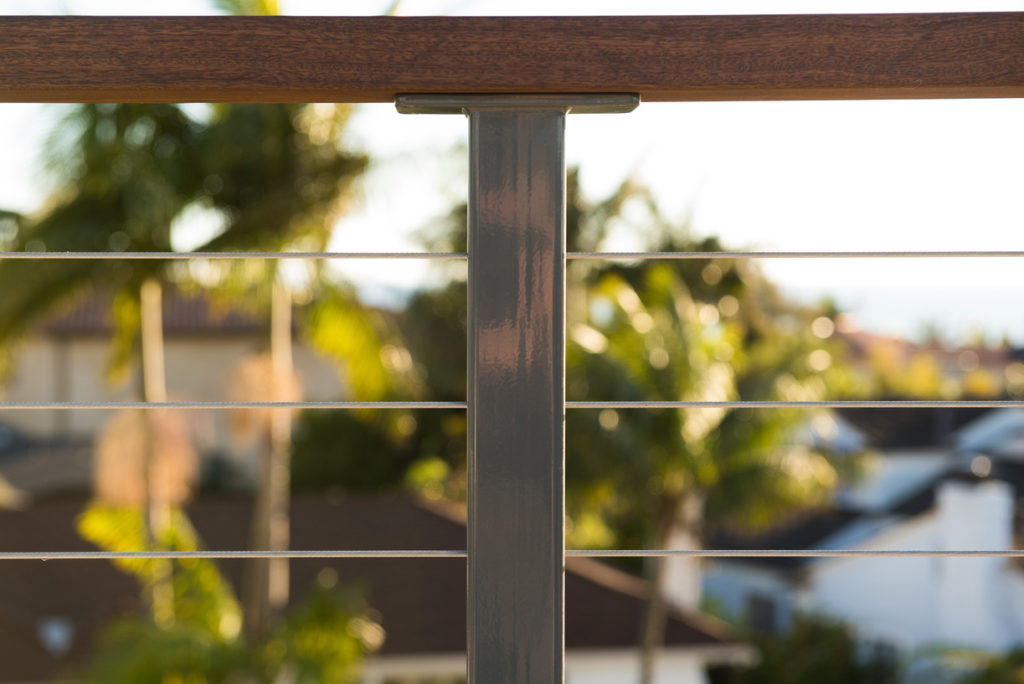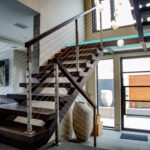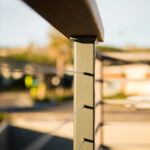If you’re building a raised deck it’s important to understand the basic safety and loading requirements for standard construction. Thousands of people are injured annually due to deck and porch accidents. Structural instability is almost always the cause for these deck failures and for this reason we offer our customers the following info. Understanding live loads, lateral loads and post spacing requirements can be a great asset to any deck building project.
Live loading requirements are commonly referenced when discussing the amount of weight a deck must be able to safely carry. A common requirement for today’s decks is 60 psf. The PSF abbreviation refers to “pounds per square foot.” Simple calculations can be performed in order to calculate the live load requirements for your deck, based on span tables like the one shown below:
Code Requirements for Decking Loads
A pounds per square foot calculation at 60 psf. will provide a safety factor for any raised platform that can safely accommodate the weight of persons and furniture on the deck surface. A well built deck should always lean towards “over built” for additional loading, snow loads etc. In many cases, a 2 to 1 safety factor is the safest approach. Simply stated a 60 pound per square foot floor load should already contain this safety factor. As these requirements can vary by area; it’s always best practice to check local codes.
The code height requirement for deck railings in California is 42″ finished height from the top of the decking to the top of the railing. Any openings in the infill must prevent a 4″ sphere from passing through the railing. A 36″ railing height is required for stairs with graspable railings required in many cases. Customers purchasing pre made railing posts should consider that the finished post height allows for a solid connection that will withstand a 200 pound lateral load applied to posts or railing sections in any direction.
Deck Safety Requirements for Railing Posts
Post spacing will greatly influence the overall strength and loading ability of a deck railing. Call outs for railing post installations that exceed 6′ spacing will not likely pass a building inspection. For cable railing systems a max spacing of 4′ on center will commonly be required to ensure that 3″ cable spacing can carry sufficient tension to pass a 4″ sphere test. For glass railings a max post spacing of 5′ is often recommended. Many online retailers call for up to 8′ spacing for deck railings however our preferred contractors do not recommend this for any raised deck surface.
Choosing the Sturdiest Decking and Railing Products
Customers looking for high strength and durability will find that only top quality materials can provide the best finished product for passing inspections. Hardwood decking planks like Ipe’ and Cumaru offer the same span capabilities at 1″ thickness that other wood types call for 1.5″ thickness. Durability of hardwood products is also likely at least double that of popular soft wood choices. In some cases hardwood is 30 times more dense than standard framing lumber.
Composite decking planks like Trex are a low maintenance option for exterior decks; with some warranties lasting 25 years. Customers selecting composite products should however consider the fact that these products are not structural in nature; and that framing requirements may need to be more stringent for composite decking. Joist spans may need to be tightened in order to maintain stability.
When selecting a railing for ultimate strength; steel posts and rails will almost always offer more strength than wood by comparison. Only hardwood species can come close to steel in terms of strength and hardness. In addition, the longevity and wear resistance provided by steel and stainless steel railings is also much higher than wood. San Diego Cable Railings is dedicated to the production of high quality stainless steel railing systems. Our company sells a full line of cable and glass railings, as well as engineered railing posts for a variety of applications.
If you have questions about deck safety requirements on your project; or you would like an estimate for deck railings click the link below.







